The Defining Photos of the Trump Era: It Was Even Weirder Than You Remember

Donald Trump is many things: a twice-impeached American president, a Businessman who makes Business Deals, a degenerate narcissist, an admitted sexual predator, a conspiracy theorist, a lover of fast food, a snake-oil salesman, the most famous person who ever lived, a servant of Mammon, an inciter of insurrection, and a guy who had a genuinely nuanced take on the killing of Harambe. But in addition to all that, the 45th president is undeniably one of the great photography subjects of all time.
Trump is an outrageous physical phenomenon, from the clown makeup to the bizarro mannerisms, who through his superhuman imperviousness to shame and bottomless lust for attention is constantly sashaying his otherworldly form into absurd and striking photo ops. By nature, he also attracts a cast of strange and unscrupulous characters around him and, combined with the disastrous and impulsive and wicked and often inexplicable decisions that defined his time as a candidate and a president, the era he dominated became a treasure trove of photographic content with a capital 'C'. The right collection of photos could come to be, in its way, as defining an account of his time in the brightest of spotlights as any weighty tome.
You've just stumbled on an attempt at that very enterprise. Are we missing any? Feel free to let us know in the comments below. But here's a first draft of a very unfortunate chunk of history.
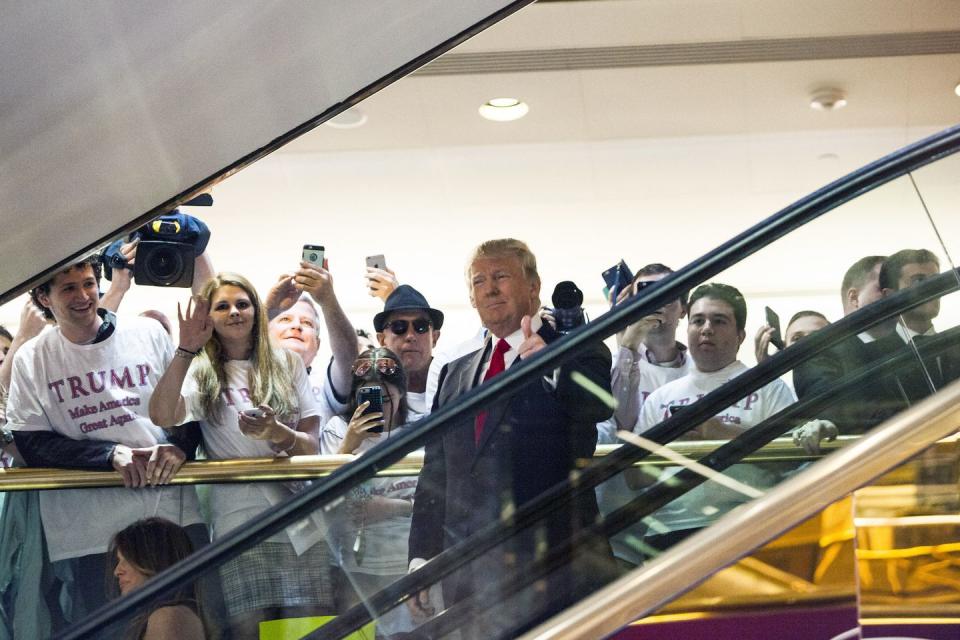
June 16, 2015: Donald Trump departed his gaudy palace in the sky above Fifth Avenue and descended the golden escalator to...his own lobby. The event would prove a harbinger of the years to come: the soon-to-be presidential candidate sought to earn some free publicity for one of his eponymously branded properties (in this case, Trump Tower in Manhattan) while engaging in the theater of politics. But despite some positive polling among Republican voters in prior years thanks to his relentless race-baiting of the first Black president—chiefly with the Birther campaign he boosted, then led—Trump did not have the kind of political organization that would have led actual supporters to attend the announcement. Many of those cheering his entrance were, reportedly, paid extras, appropriate for the guy who'd played a Businessman on TV from a boardroom that the producers had to have built as a set upstairs.
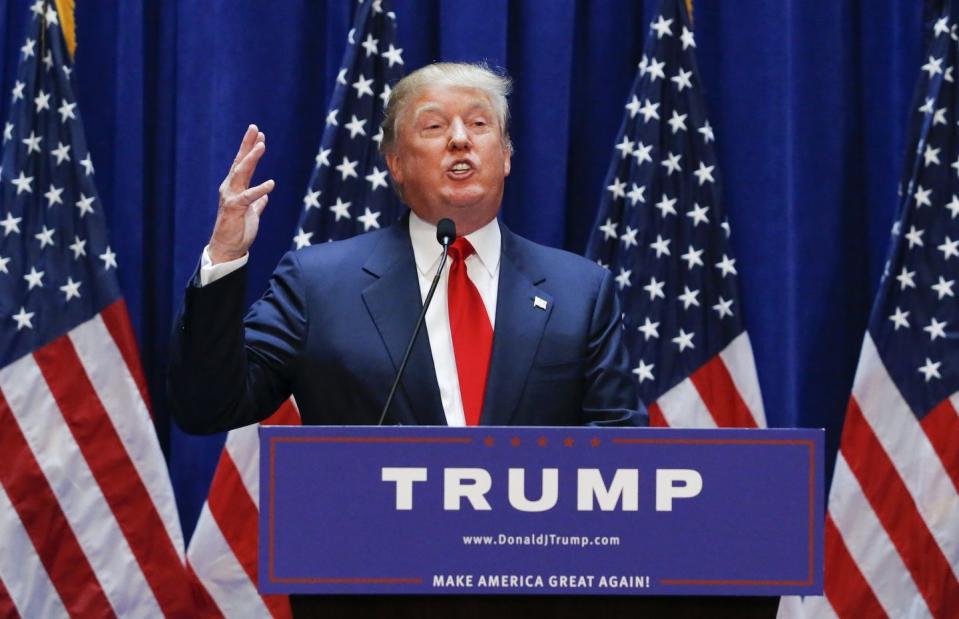
June 16, 2015: At the announcement of his campaign for president, Trump unveiled the campy authoritarian chic that would inform his political style for the half-decade to come. But he really threw down the gauntlet when he unlimbered himself of his view on Mexican nationals who cross the southern border illegally: "They're bringing drugs, they're bringing crime, they're rapists. And some, I assume, are good people." That last part was somehow just about the most charitable take he'd have on undocumented immigrants for the rest of his time in public life: he almost never, over the ensuing years, spoke of immigrants in any context except when offering dark warnings about MS-13 and other criminal young men. Somehow, it took close to four years for large swathes of the media to say outright that this guy is a bit of a racist.
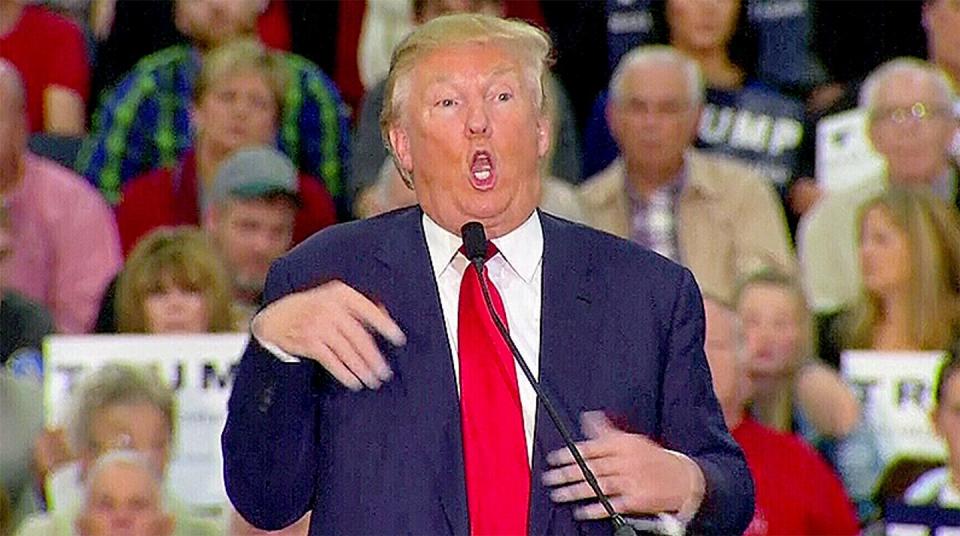
November 24, 2015: Trump had been feasting for months on his story—which grew more deranged which each telling—of how Muslims had celebrated on rooftops in New Jersey on 9/11. He tried to dig up some evidence in an old New York Times article that mentioned the allegations in passing. When one of the reporters who wrote it, Serge Kovaleski, disputed his characterization, Trump responded by mocking Kovaleski's disability—he has arthrogryposis, which limits the functioning of his joints—at a rally. The crowd roared in a stunning early sign that for his supporters, the cruel and vicious features of his behavior were core to Trump's appeal. The original false 9/11 story, of course, amounted to a dangerous libel against Muslim Americans.
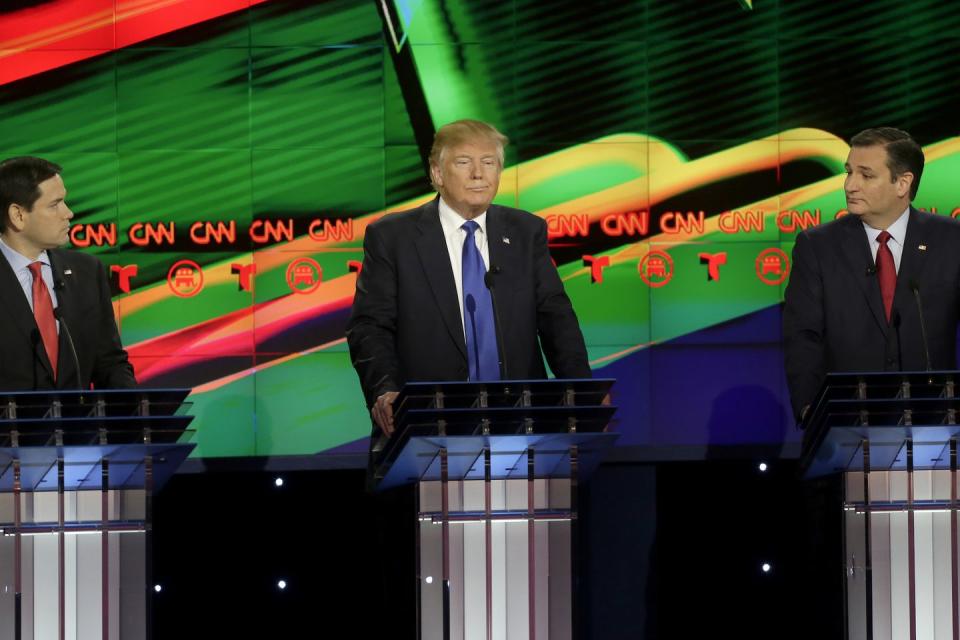
February 25, 2016: The Republican debates were crucial to Trump's rise in 2016, as he seized on a medium he had long since mastered—television—to dominate a cast of right-wing conservatives who lacked even an ounce of showmanship. These were politicians thrust into a different world entirely—one of Trump's making, where pettiness and absurdity could be used to poke holes in the puffed-up balloons of these wannabe statesmen. They took jabs at each other, but they all seemed to be revolving around him at the center. Once he got there, they could not dislodge him. Trump exposed his opponents as mediocre suits in service to the faceless corporate American machine. He would prove little different in office, but he provided the bread and circuses: in his case, a rollicking performance of war on the Establishment and the Elites while cutting those same people's taxes.

May 5, 2016: Throughout the primary, Trump proved singularly adept at attracting attention to himself with outrageous behavior and facing no consequences when he just moved onto something else immediately. Take, for instance, the Taco Bowl Tweet. "Happy #CincoDeMayo!" he told his followers. "The best taco bowls are made in Trump Tower Grill. I love Hispanics!" It's hard to really encapsulate how many insane things are in those very few words, a series of things that would be unacceptable in any other professional context. The media immediately went into a frenzy, and why not? He was leading in the polls while talking like this. It was the birth of trolling as politics, food-fight discourse, a nihilistic mess that would allow him the kind of chaos he'd need to climb the ladder to power.
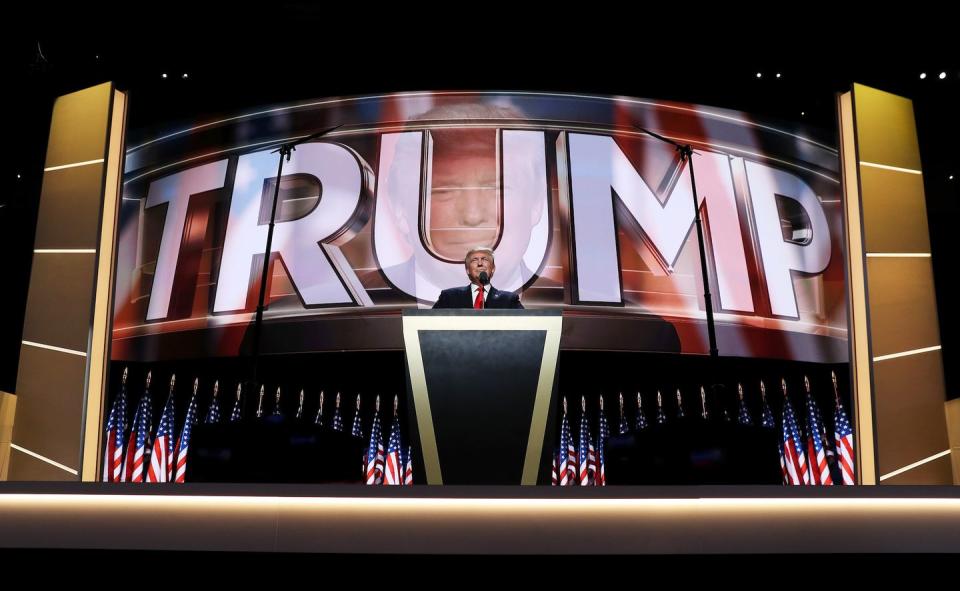
July 21, 2016: In retrospect, the set at the 2016 Republican National Convention pretty much told the whole story.
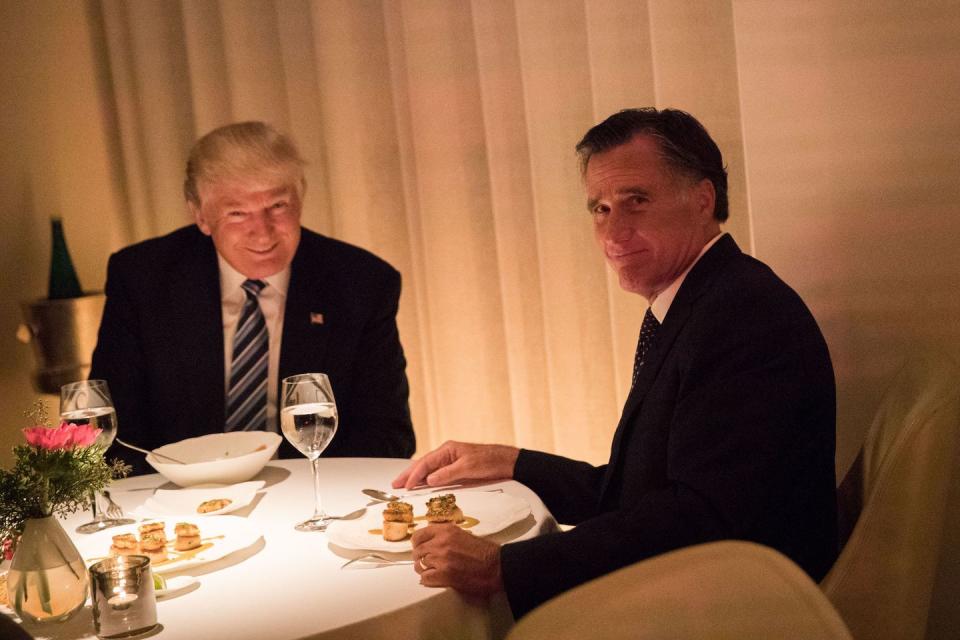
November 29, 2016: If you were looking for a single photo to encapsulate Trump's relationship with the buttoned-up Republican establishment, here it is. The photo was taken during the 2016 presidential transition, when he was dangling the Secretary of State job in front of 2012 nominee Mitt Romney's face like a cat toy. It's a little Renaissance painting, as the aristocratic Mormon winces over his diver scallops as he contemplates what is required to sate his relentless ambition and Trump wears a sneering and devilish grin in the background, knowing full well there is no planet on which he'll give Romney the job. The former standard bearer had crossed him in the primary, delivering a speech denouncing him, and he used Romney's ambition—which proved more powerful than any scruples in that moment—to take his revenge.
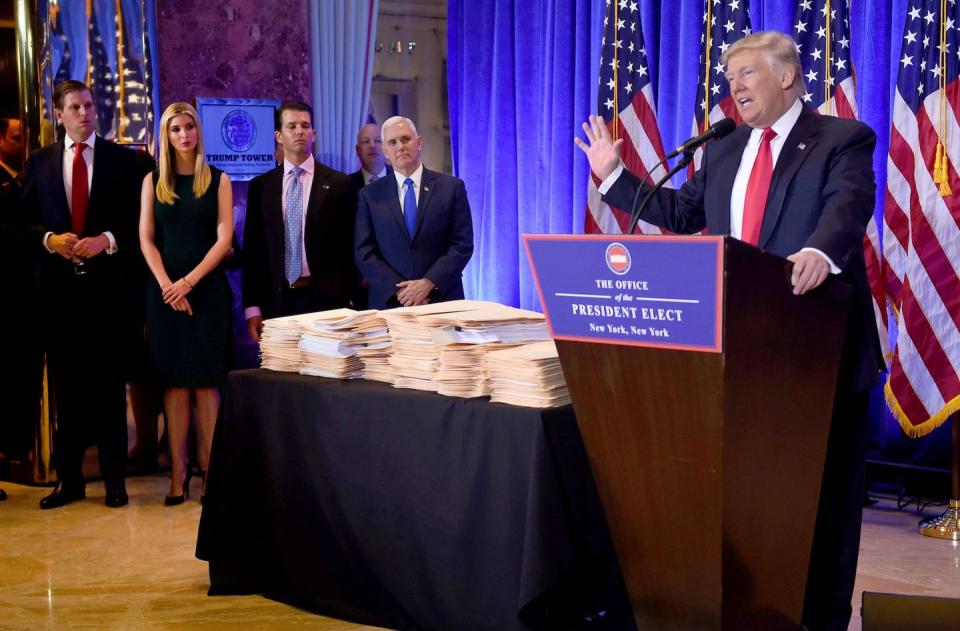
January 11, 2017: As a kind of opening salvo in his war on the Emoluments Clause, Trump held a grand press conference at Trump Tower in which he detailed his plans to turn over "complete and total control" of his businesses to his large adult sons. The rationale was clear: he'd be making policy that would impact large companies and foreign interests, so he couldn't possibly take money into his private business from those same kinds of actors without it becoming a conflict of interest. It was almost immediately exposed as a sham divestment, which was manifest physically in the ridiculous number of manila folders Trump placed on a table beside him for the announcement—and which he would not permit anyone to inspect, probably because they were Definitely Not Blank. "These papers are just some of the many documents I've signed" turning over control, he said. It was a stunt that echoed his initial tax returns bit, which he never voluntarily gave anyone a look at, either.
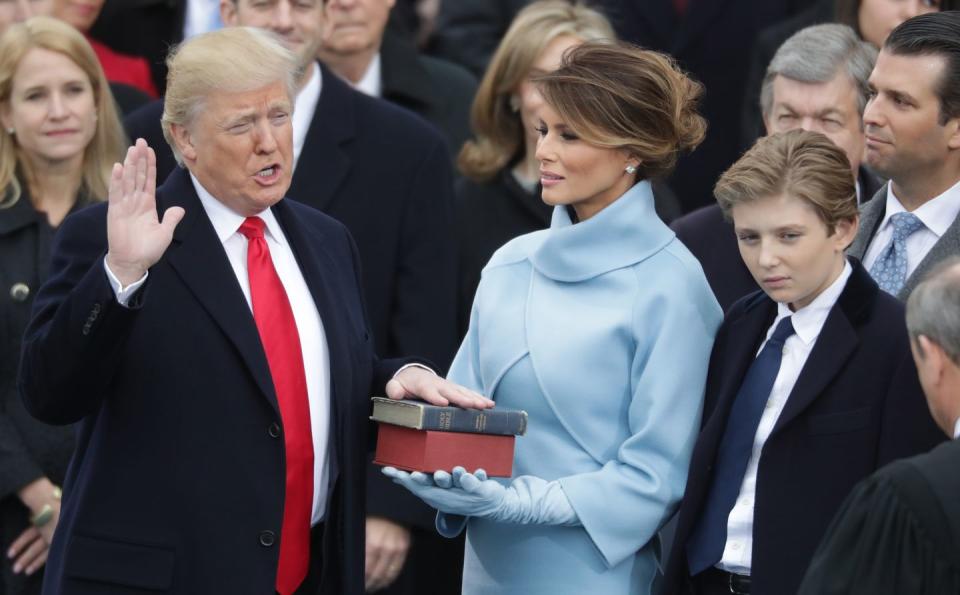
January 20, 2016: It still felt genuinely surreal that Trump would actually take the job of President of the United States when he put his hand on the Bible. That the nearly First Lady, Melania Trump, still believed she could be the Jackie O of her time at this point only added to the bizarro feel. Pretty much as soon as Trump finished taking the oath of office, he was in violation of it: he was gobbling up emoluments from foreign actors from the get-go , and his betrayals of the Constitution he'd pledged to protect would only grow greater as the years went by.
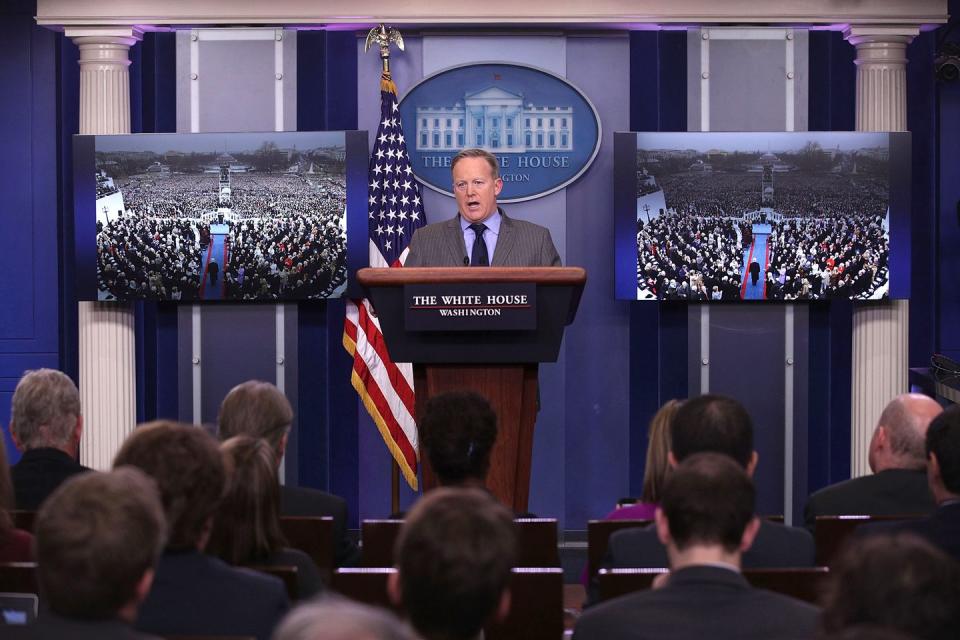
January 21, 2017: The very first White House press secretary of the Trump Era, Sean Spicer, kicked off the new administration's relationship with the press in spectacularly apt fashion. Spicer was marched out the day after the inauguration to yell insane lies at the assembled White House reporters that demanded they, and the country, begin to reject the evidence of their own eyes and ears and accept whatever Trump said happened as the truth. The turnout for his inauguration was not a lukewarm smattering on the National Mall, we were told: It was "the largest audience to ever witness an inauguration, period, both in person and around the globe." Trump's biggest issue with Spicer's performance reportedly was not that he'd made a fool of himself with such an outlandish claim, but that he'd had such a shabby suit on while he did it. It was, as ever, about how things look, not how they are.
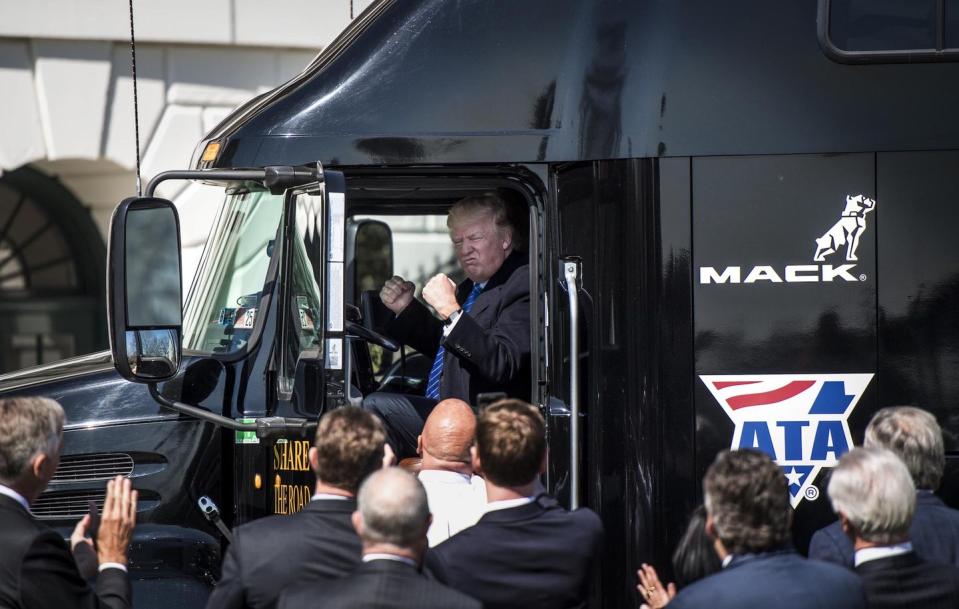
March 23, 2017: It can be easy to forget that along with all the hate, deceit, and ethnonationalism, Trump also brought a strange sort of childlike wonder to the White House. The president would occasionally betray the fact that beneath the incitement and bluster he was at least in part an 11-year-old kid trying to get people to like him and have a good time. So when some truckers and CEOs came to the White House for an event, he hopped in the cab and seemed to live out a dream. This was early on, when he still clung to the belief that, now that the election was over, everyone would just start cheering him on.

March 23, 2017: When Trump, following then-Speaker Paul Ryan's lead, made one of the first major mistakes of his presidency by kicking off his term trying to repeal Obamacare, he at one point assembled a crack team of House Republican loons at the White House to get the job done. Vice President Mike Pence also made the invite list and elected to tweet a photo of the meeting that ultimately took on a life of its own as a Resistance. In short, it was a vivid illustration of the Trump administration as government by and for rich old white dudes.
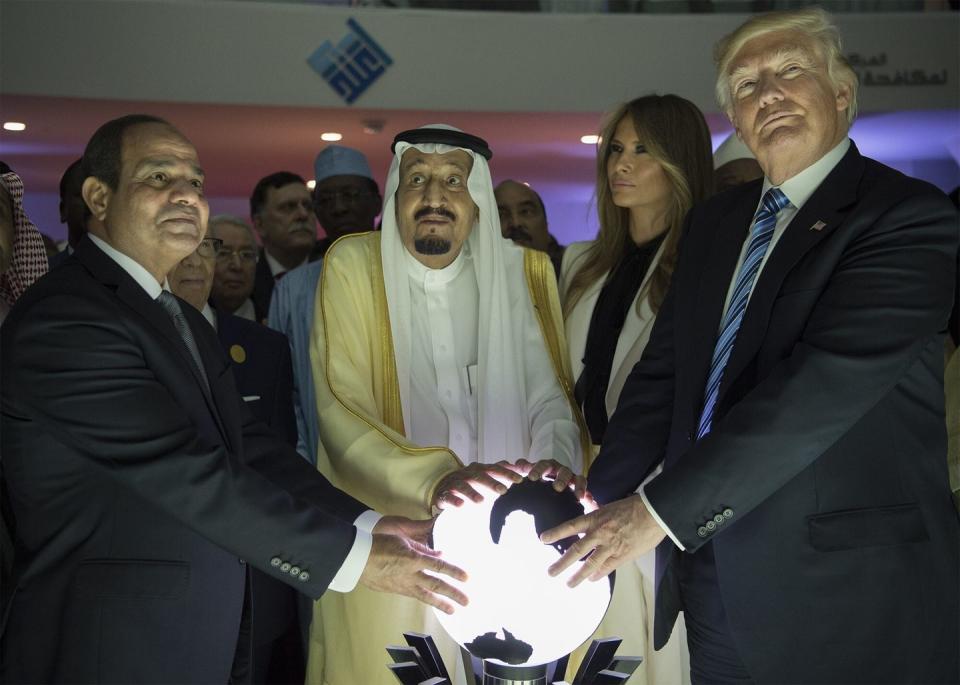
May 21, 2017: Trump travelled to Saudi Arabia for the grand opening of the Global Center for Combating Extremist Ideology in Riyadh, where he posed for this iconic photo with Egyptian "President" Abdel Fattah el-Sisi and King Salman bin Abdulaziz al-Saud. Having railed against Islam as a candidate, he quickly saw the upside of making friends in the Middle East once in office. (It probably helped that the Saudis were willing to spend a ton of money at his hotels.) Trump's honest assessment of the exercise is written on his face in the moment: he finds the whole thing absurd, because it is.
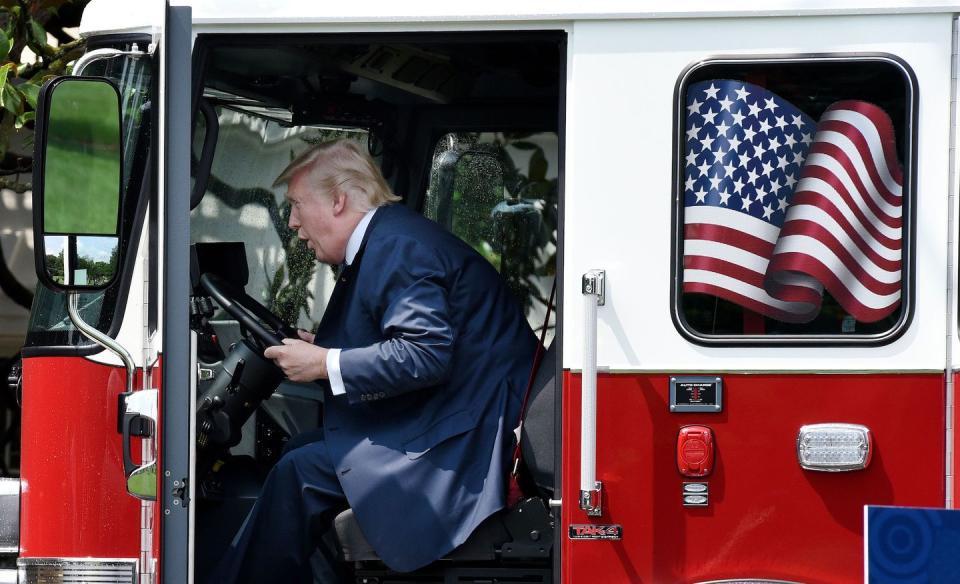
July 17, 2017: Man, this guy loves trucks.
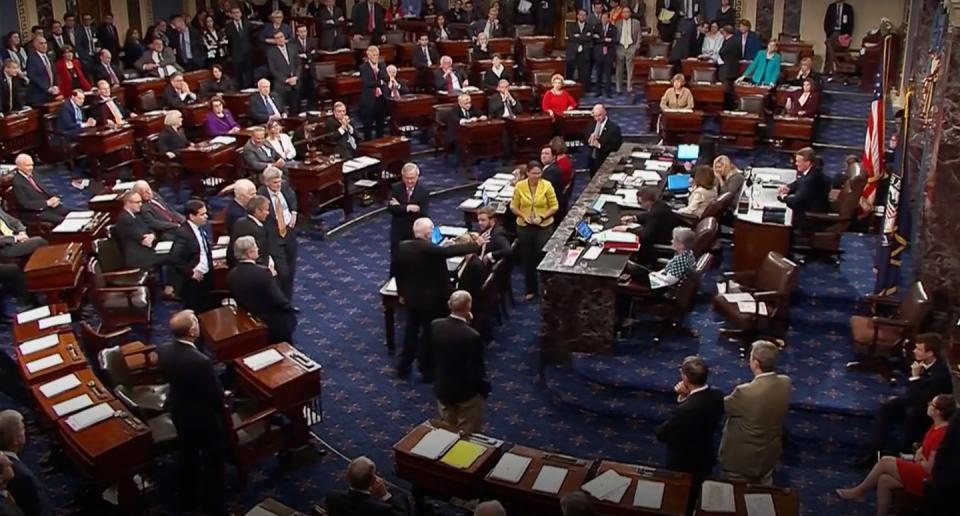
July 28, 2017: John McCain provided the deciding vote to defeat the Repeal and Go Fuck Yourself healthcare bill Republicans had been trying to force through Congress in various grotesque forms for months. Trump seemed to have little interest in actual healthcare policy, but he was determined to strike any of Barack Obama's accomplishments from the record—particularly his signature healthcare bill. It was a neat rejoinder, then, to see another of his first enemies, McCain, provide the knockout blow. It was also the right thing to do: while Obamacare is seriously flawed, the alternative served up by congressional Republicans was unconscionable.

August 11, 2017: On the night before the so-called "Unite the Right" rally in Charlottesville, Virginia, a group of young men gathered to make it abundantly clear what the meetup was all about. Evoking images of the Ku Klux Klan in its heyday, they carried torches through the night to the statue of Robert E. Lee, a spectacle of racial terror that set the tone for a weekend of American ignominy. It was all typically bizarre, too, as many wore a normcore Caucasian uniform of white polos and khakis while carrying Tiki torches undoubtedly bought at big-box stores. It would not be the last time in this era that genuine menace lurked beneath a veneer of clownery.
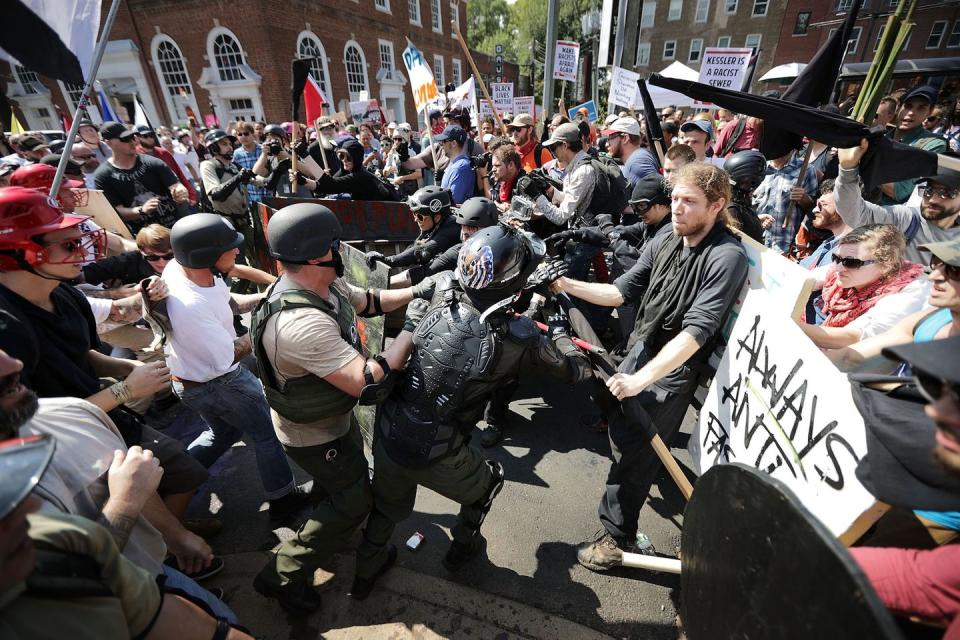
August 12, 2017: The rally the following day saw the main event: American white supremacists on the march in broad daylight. The Charlottesville police retreated from the scene and allowed it to devolve into street fighting between various elements of the extreme right and well-documented hate groups—including the KKK and neo-Nazi factions—and loosely-affiliated antifascist counter-protesters. The street violence escalated, and by day's end, it had emerged as one of the darkest in recent American history. James Fields, an avowed neo-Nazi, drove his Dodge Challenger through a crowd of antiracist protesters, killing Heather Heyer and injuring dozens in what even then-Attorney General Jeff Sessions called an act of domestic terrorism. Fields was convicted and is serving life in prison.
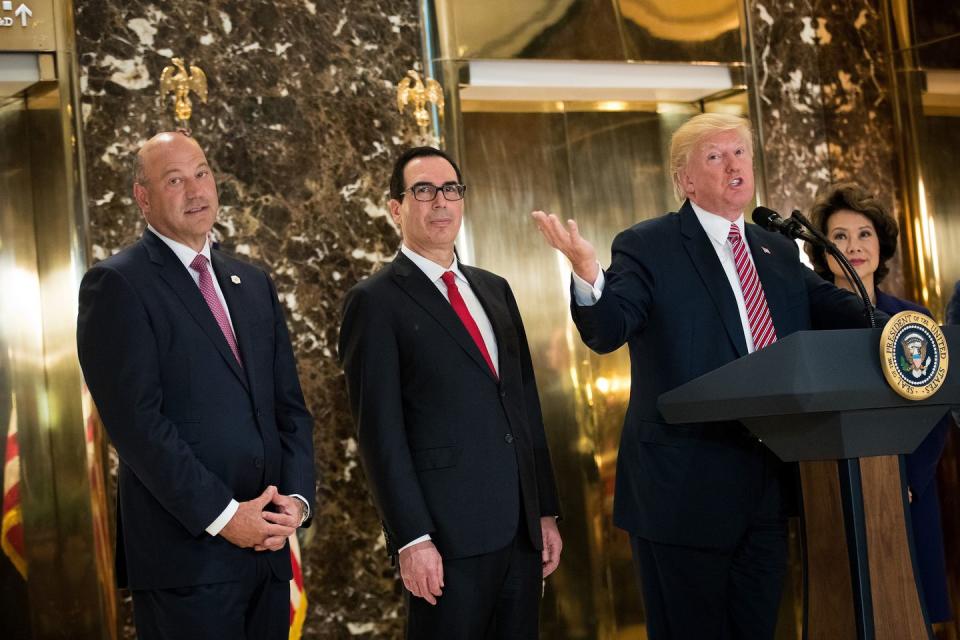
August 15, 2017: Trump's initial response to Charlottesville was alright, though it offered at most lukewarm condemnation of the white-supremacist mob that wreaked havoc on an American city. By a couple of days later, however, Trump returned to his worst impulses, finding a way to excuse members of the crowd by suggesting some "very fine people" were marching alongside neo-Nazis and the KKK, and they just wanted to keep Robert E. Lee's statue up. He did not appear to pause to consider why all these people were so invested in the statue—which Trump was clear he very much liked—or why they all, including the neo-Nazis, seemed to support him. At the same time, he motioned towards equating the counter-protesters with the right-wing extremists with the "both sides" talk. It introduced enough ambiguity that, not for the first time, the most extreme elements could take the president's words as a tacit seal of approval. Meanwhile, the faces of advisers like Gary Cohn (left) and John Kelly (in the back of the room) betrayed a creeping sense of shame.

September 15, 2017: 11-year-old Frank Giaccio sent a letter to the president asking for a dream to be fulfilled: he wanted to mow the White House lawn. Trump obliged, and it was a nice thing. Frank was indeed so into the job that he blew by the president when he came out to greet him—probably a combination of the ear plugs he was wearing and Trump’s...work-in-progress bedside manner with children. After all, a photo of Trump’s greeting attempt quickly became one of the defining memes of the era: the United States president, standing very normally, yelling at a kid with a lawn mower. For years, people would paste some all-caps Trumpian exclamation next to the photo, imagining he was yelling it at sweet Frank.
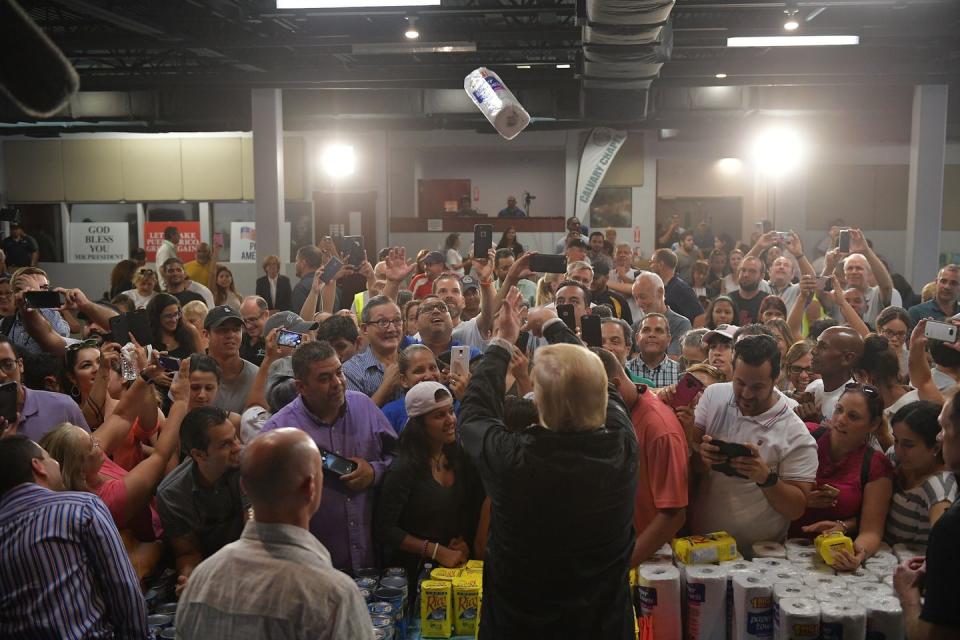
October 3, 2017: When Hurricane Maria decimated Puerto Rico, Trump took his time to visit. It was clear that he could not care less about the island territory—particularly in comparison to Texas and Florida, which were hit by hurricanes around the same time—but his arrival itself was a testament to this. Tasked with handing out paper towels and other goods that residents desperately needed, he started hucking up jump shots into the crowd, throwing things at them in a way that was more than a little dehumanizing. The president's capacity for empathy is...limited in most contexts, but it was a glaring miss when he was tasked with greeting storm victims.

October 26, 2018: If anything encapsulated Trump's relationship to the press, it was ChopperTalk. For a sizable chunk of his tenure, there simply were no White House press briefings. The only opportunity that White House reporters got to ask a senior administration official a question was when Trump would stop by the scrum on his way to Marine One. With the helicopter screaming in the background, Trump could prowl up and down the rope line, all eyes on him as he picked which reporters would ask a question. He'd seize on one or a few words they said and get to one of his talking points. If they tried to ask a follow-up or challenge him, it would scarcely get picked up over the din of the helicopter and he'd ignore them.
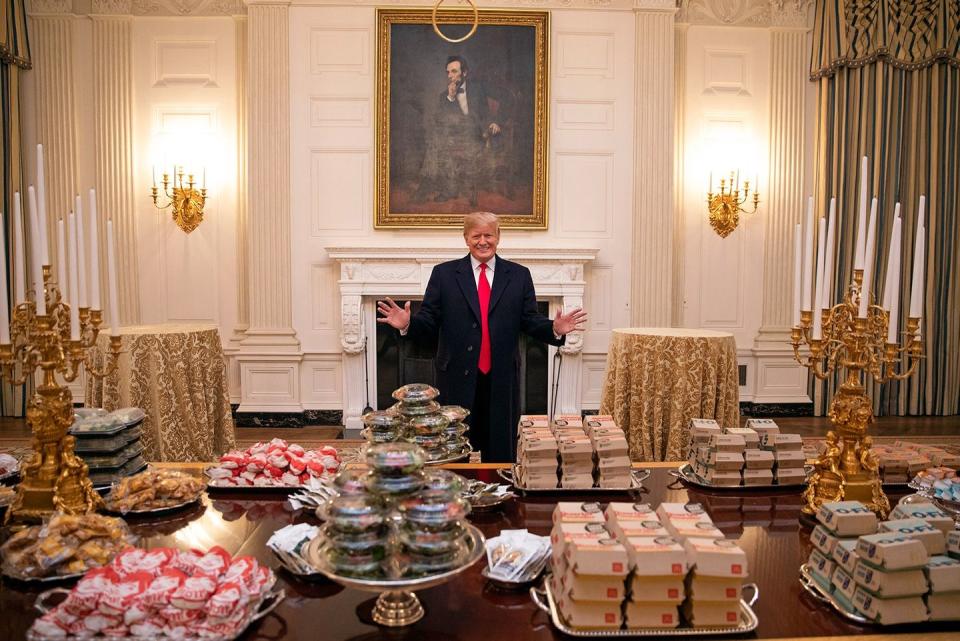
January 14, 2019: When Trump engineered a government shutdown to try to force Congress to fund his Big, Beautiful Wall, many government employees were furloughed—including, it seemed, the White House kitchen staff. Since he was scheduled to host the national champion Clemson Tigers football team, Trump needed a way to feed the strapping young men coming by. He turned to one of his favorite sources: a selection of all-American fast food joints. It was decried at the time as classless, the footage of Trump triumphantly posing with the non-nutritious fare beneath a photo of Abe Lincoln. The New Yorker lamented the "pure American banality" of it all. But isn't this one of the few normal, vaguely relatable things he ever did?
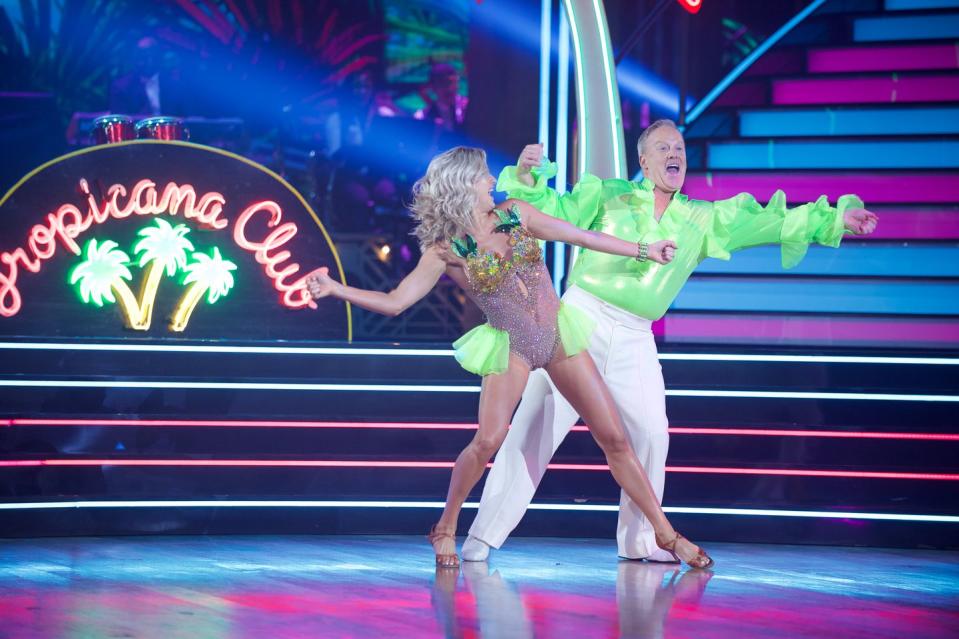
September 16, 2019: By the time Sean Spicer was making an ass of himself on Dancing With The Stars, it was clear that much of the mass media had acquiesced to Trump's larger project of merging politics with entertainment—and, in the process, injecting aesthetics into political life. Spicer's Emmys appearance, too, served to aestheticize his work on the president's behalf, lying constantly to the public about matters big and small. It was theater, a performance. Suddenly, he was just another character from the TV, a cringey buffoon who, sure, helped construct a shape-shifting alternate reality that allowed the world's most powerful man to act with impunity. But look! He's flamenco dancing!

March 6, 2020: As Trump was made to realize that the coronavirus pandemic was a real problem he would have to deal with, he travelled down to Georgia to visit the CDC, where he was given a photo of the virus organism itself. Wearing a red "KEEP AMERICA GREAT" hat, he held the image up for the cameras while a deer-in-the-headlights look etched itself across his face. If that was terror making itself apparent, it was with good reason. A week later, he was forced to lock down the country.
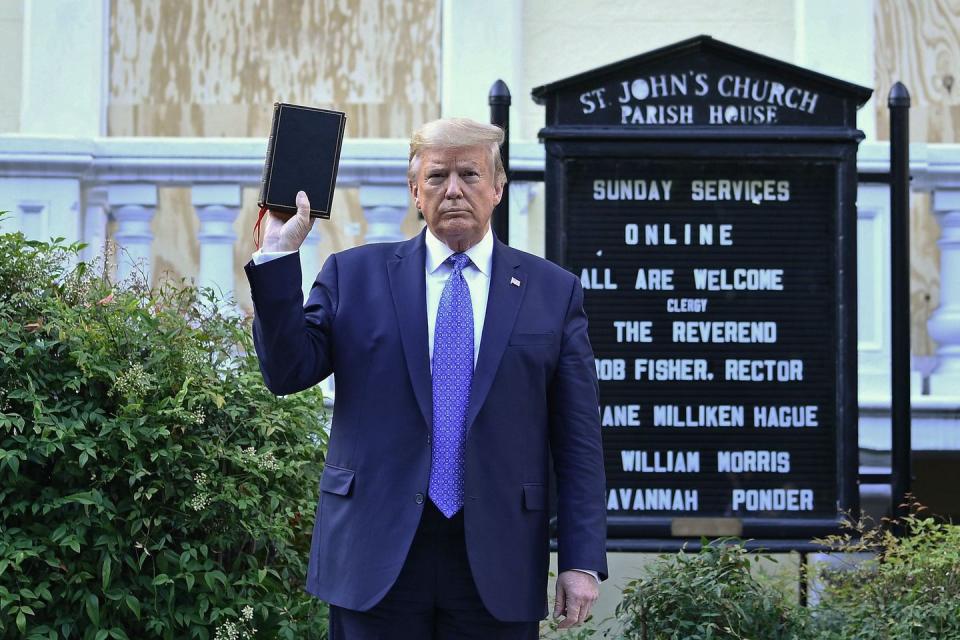
June 1, 2020: On one of the darkest days in a presidency full of them, Trump ordered segments of the nation's security apparatus to clear out racial-justice protesters demonstrating peacefully near the White House with significant force so that he could march over to St. John's Episcopal Church and hold up a Bible. It was more of his signature authoritarian chic, a clumsy attempt to wrap himself in the legitimizing symbols of traditionalist American life while responding to calls for reform with violence. The gesture put it all in sharp relief: the book was, to him, a weapon. It was a particularly grotesque look at the transactional nature of his relationship to Evangelical religious leaders, who've known all along that Trump has never cracked a Bible, nor attended this church or any other. But he did deliver the judges.

July 14, 2020: After Goya Foods CEO Robert Unanue praised Trump as part of a Hispanic roundtable at the White House, a backlash erupted and the boycott calls began. It was probably inevitable, considering Counselor to the President Kellyanne Conway had urged Fox News viewers to buy items from Ivanka Trump's clothing line while they both served in the White House, that Ivanka herself would be found promoting products. But while so many other instances demonstrated that the Trump family saw no line between public office—and the obligations of public service—and their personal businesses or fortunes, this was something else. Suddenly, a Goya can was a weapon in a culture war that Ivanka Trump could not care less about, beyond what it might represent as far as political gain. You can tell by all that passion behind her eyes. The tweet's Spanish translation, considering the record of the administration she served in, iced the cake.

October 5, 2020: After months of mostly refusing to encourage his supporters to wear masks to prevent the spread of the novel coronavirus, Trump contracted COVID-19 himself and was rushed to Walter Reed, where a barrage of cutting-edge treatments usually reserved for patients with life-threatening Covid. When he returned to the White House, hopped up on steroids and still exhaling droplets of pandemic disease, he flew in on Marine One and slowly clambered up the stairs to the Truman Balcony. He removed his mask and stood saluting the screaming machinery of American military might in front of him, visibly wheezing as he struggled to breathe. It was authoritarian chic, a gesture of defiance even as his body betrayed the sickness within—and all around the rapidly declining American empire.

January 6, 2021: Having screamed for months that the election—and America itself—had been stolen from him and his followers, Trump brought his people to Washington, D.C. on the day Congress was set to confirm he would soon leave office and finished the job of riling them up with a speech in front of the White House. He told them he'd march on the Capitol with them in order to "Stop the Steal"—then promptly went back to the White House and watched on television as they sacked the legislature.
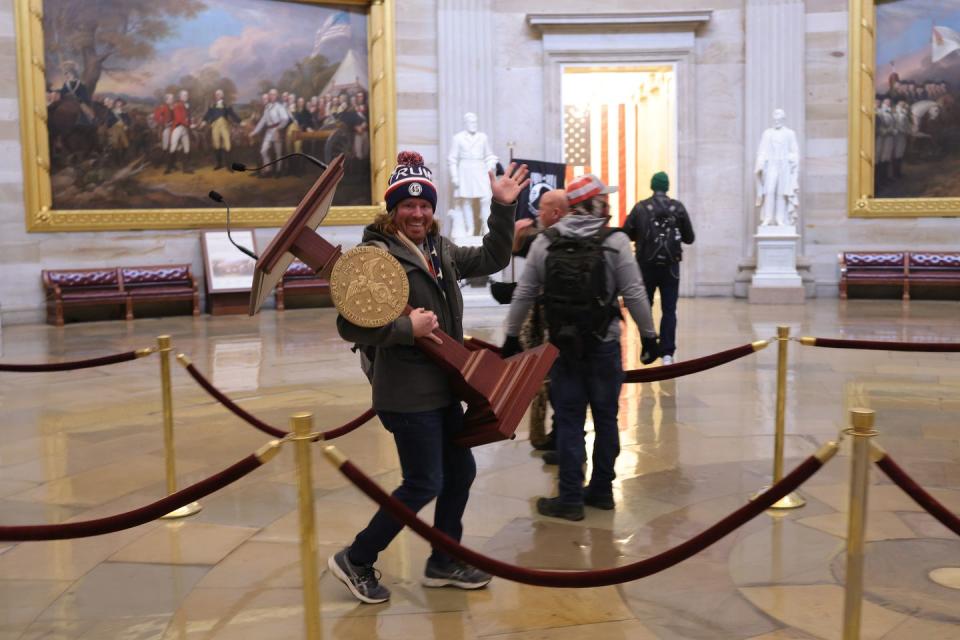
January 6, 2021: When the mob did storm the Capitol, there was an immediate sense that these people were clowns. They wore ridiculous costumes, they made fools of themselves. But the main message from all of it, best captured by a man walking off smirking with the Speaker of the House's lectern, is that they were almost serenely confident that they would face no consequences for it.

January 6, 2021: But once again, beneath the layer of clownery, it was very much not a joke.
You Might Also Like


